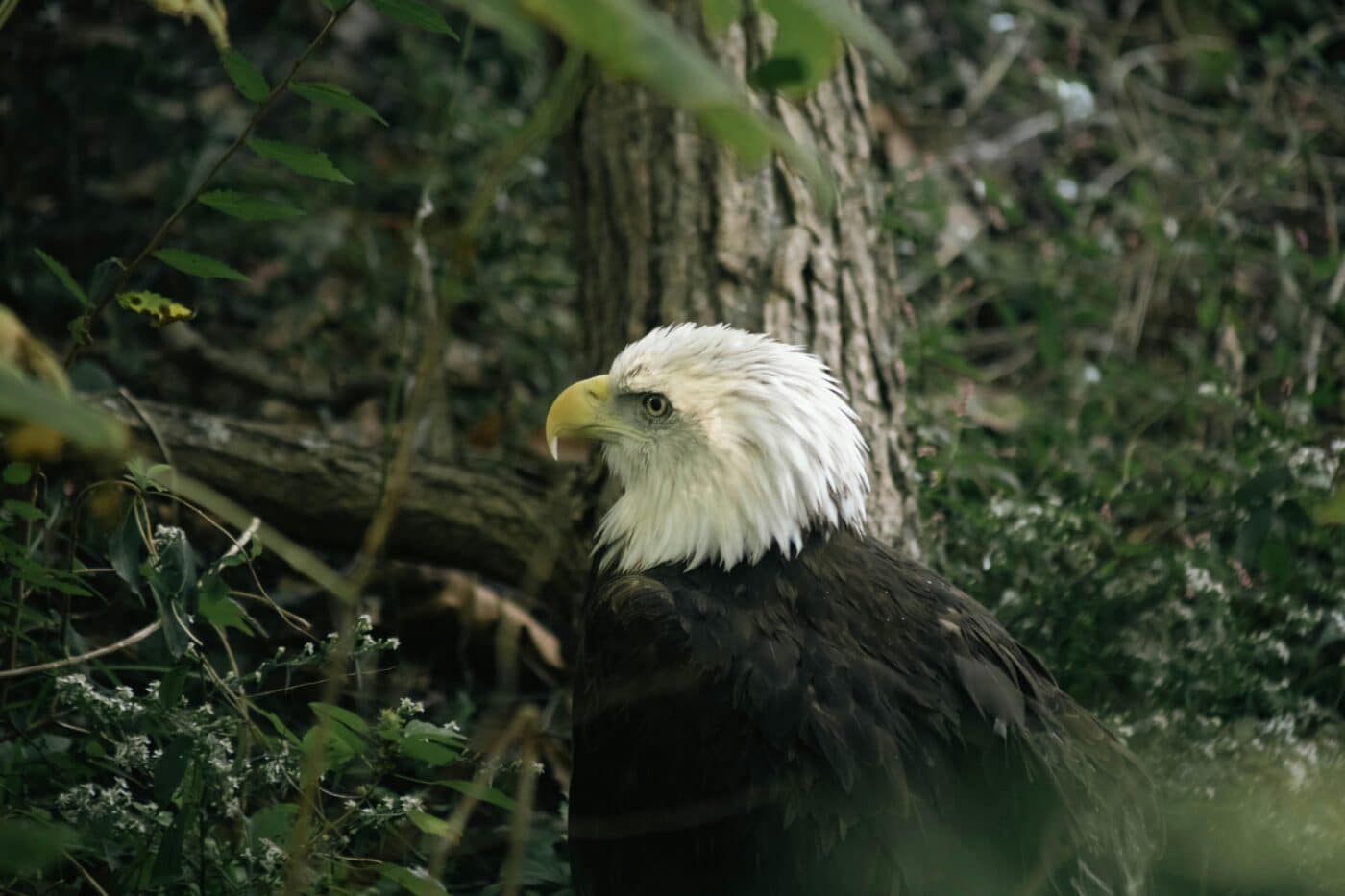 Shutterstock
Shutterstock
The rainforests of the world are home to some of the most extraordinary and unusual animals on the planet. These ecosystems, rich in biodiversity, shelter creatures that have developed remarkable adaptations to survive in their unique environments. From frogs with transparent skin to eagles with immense wingspans, these animals often seem more like mythical beings than real-world inhabitants. In this list, we explore the most unusual rainforest animals, each with their own fascinating traits and survival strategies.
Glass Frog
 Shutterstock
Shutterstock
The glass frog is a small amphibian native to the rainforests of Central and South America, known for its translucent skin, which makes its internal organs visible. This unusual feature allows the frog to blend seamlessly into its surroundings, offering excellent camouflage from predators. Found on leaves overhanging streams, glass frogs are primarily nocturnal and exhibit unique behaviors like guarding their eggs until they hatch. Their striking transparency and elusive nature make them one of the rainforest’s most fascinating creatures.
Aye-Aye
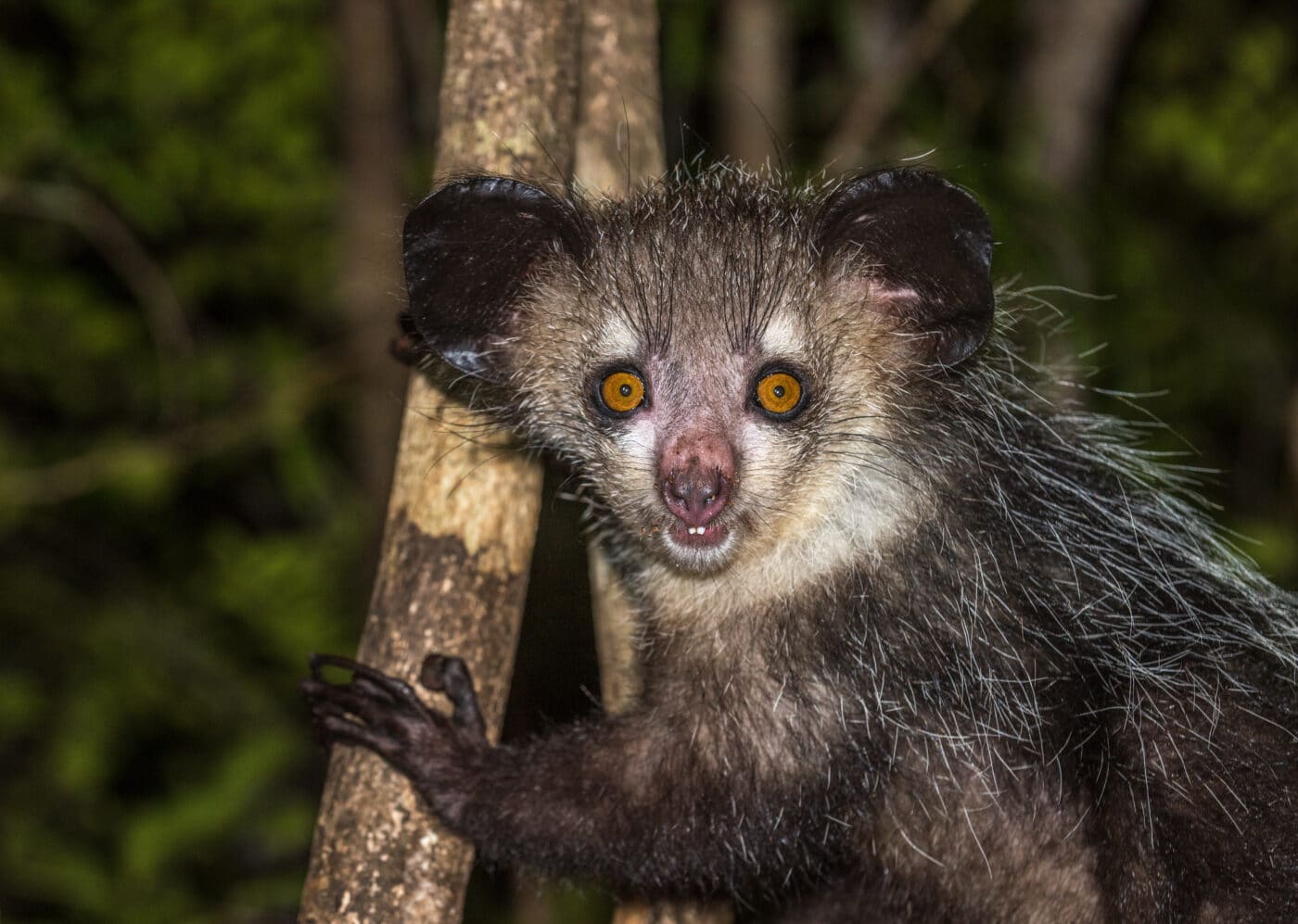 Shutterstock
Shutterstock
The aye-aye is a nocturnal lemur native to Madagascar, known for its eerie appearance and highly specialized hunting technique. Its most distinctive feature is its long, thin middle finger, which it uses to tap on tree bark and locate insect larvae hidden within. Once it detects movement, the aye-aye uses this same finger to extract its prey, acting much like a natural tool. Despite its peculiar appearance, the aye-aye plays an essential role in the rainforest ecosystem, but it is often regarded with superstition by local communities.
Goliath Birdeater
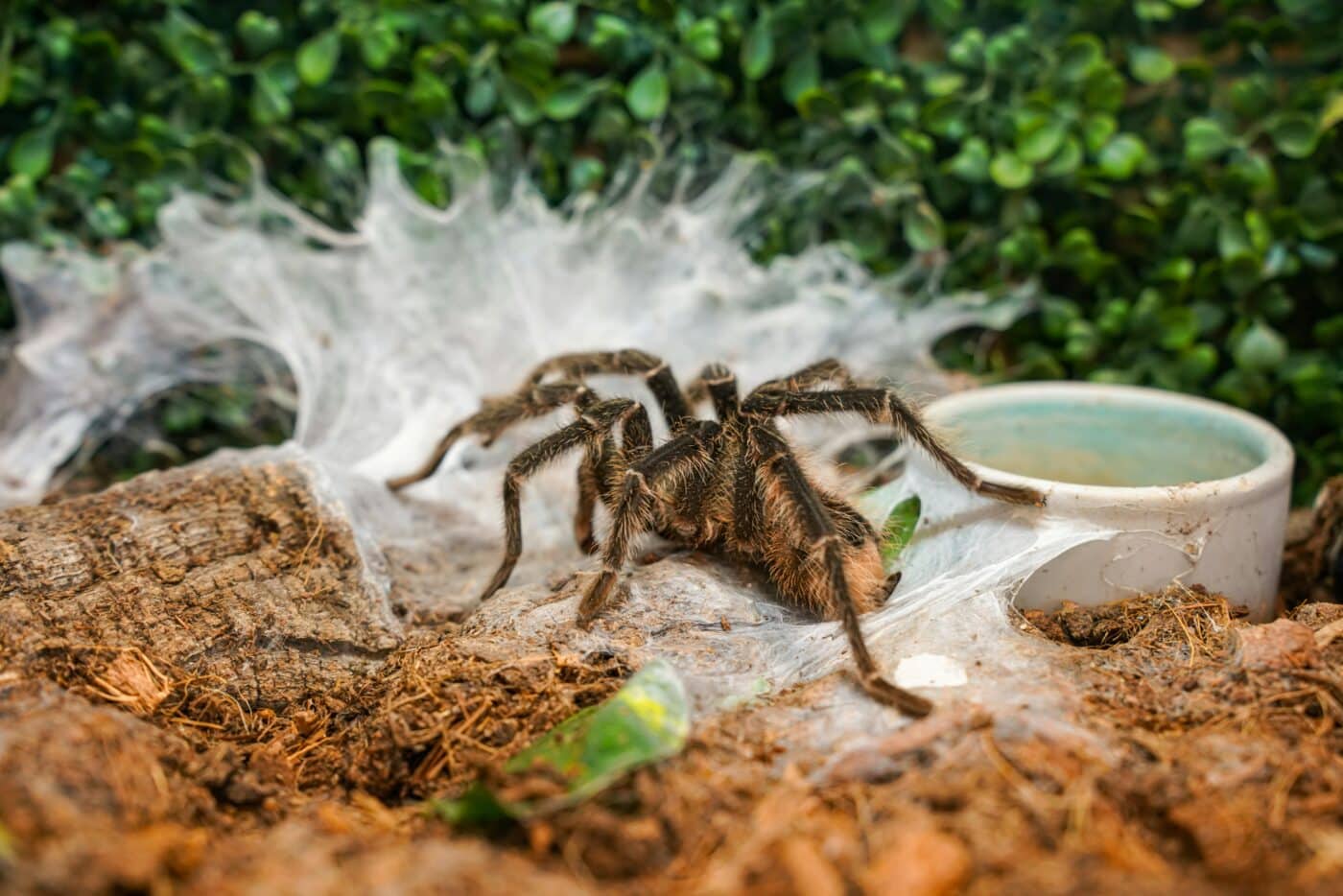 Shutterstock
Shutterstock
The Goliath birdeater is the world’s largest tarantula by mass, found in the dense rainforests of the Amazon. Despite its name, it rarely eats birds, instead preying on insects, small mammals, and amphibians. With a leg span that can reach up to 12 inches, it is an intimidating predator, using its powerful fangs to subdue prey. Though its size is fearsome, the Goliath birdeater is generally shy and relies on its urticating hairs as a defense mechanism rather than its venom.
Okapi
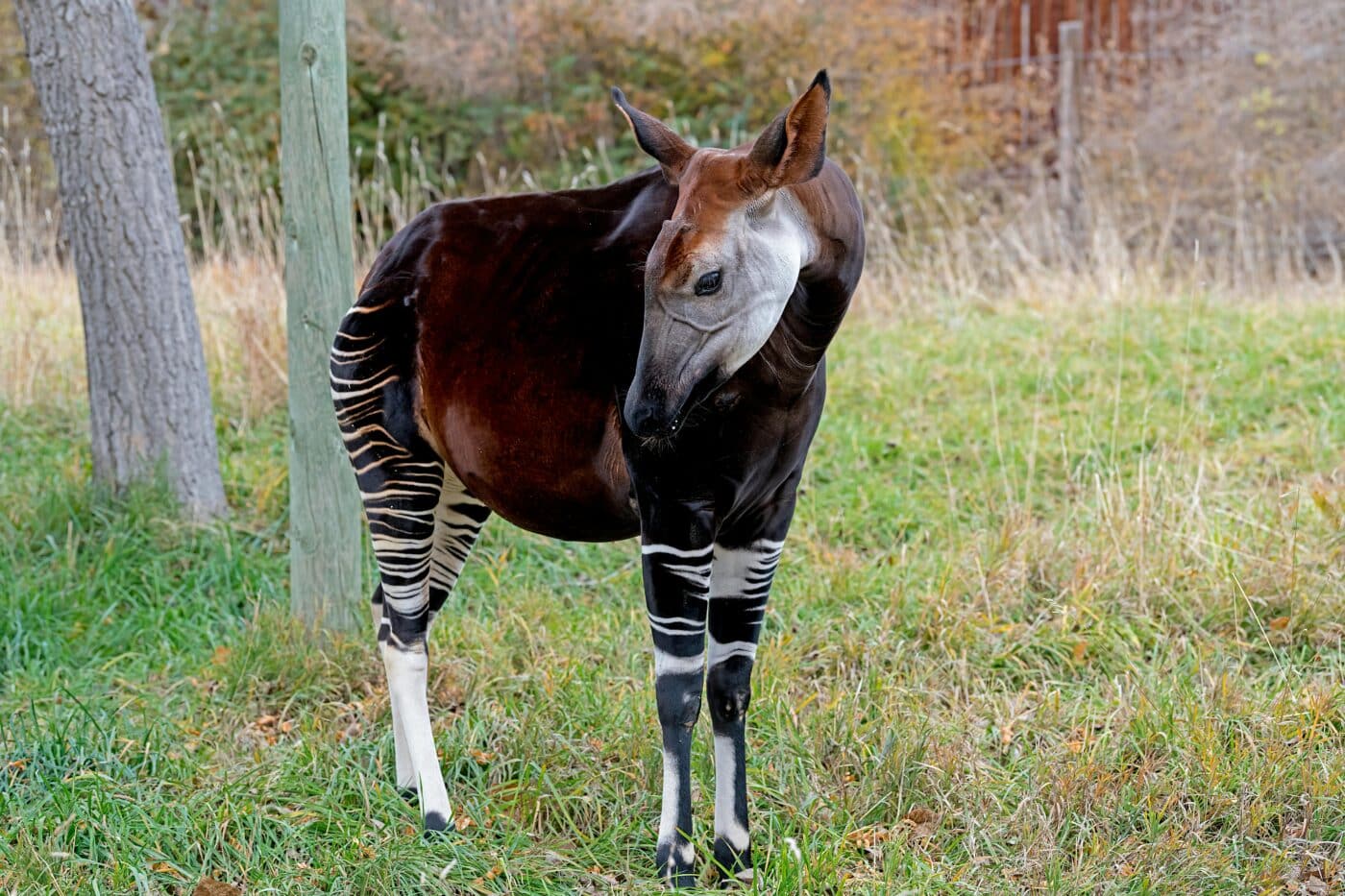 Shutterstock
Shutterstock
The okapi, native to the dense rainforests of the Congo, is a unique and elusive mammal that is the closest living relative to the giraffe. Despite its zebra-like stripes on its legs, the okapi’s overall body shape and long neck reveal its relation to its taller cousin. Its dark, velvety coat and stripes provide excellent camouflage in the thick forest undergrowth, helping it evade predators. Okapis are solitary animals, known for their quiet, secretive behavior, making them one of the most mysterious creatures of the African rainforest.
Jesus Christ Lizard
 Shutterstock
Shutterstock
The Jesus Christ lizard, officially known as the common basilisk, is famous for its remarkable ability to run across the surface of water. Native to the rainforests of Central and South America, this lizard uses its speed and specialized fringed toes to create air pockets, allowing it to “walk” on water for short distances to escape predators. When threatened, it sprints upright across streams and ponds, a behavior that has earned it its biblical nickname. Beyond this extraordinary talent, the basilisk is also an excellent swimmer and climber, thriving in the dense, humid rainforest environment.
Leaf-Tailed Gecko
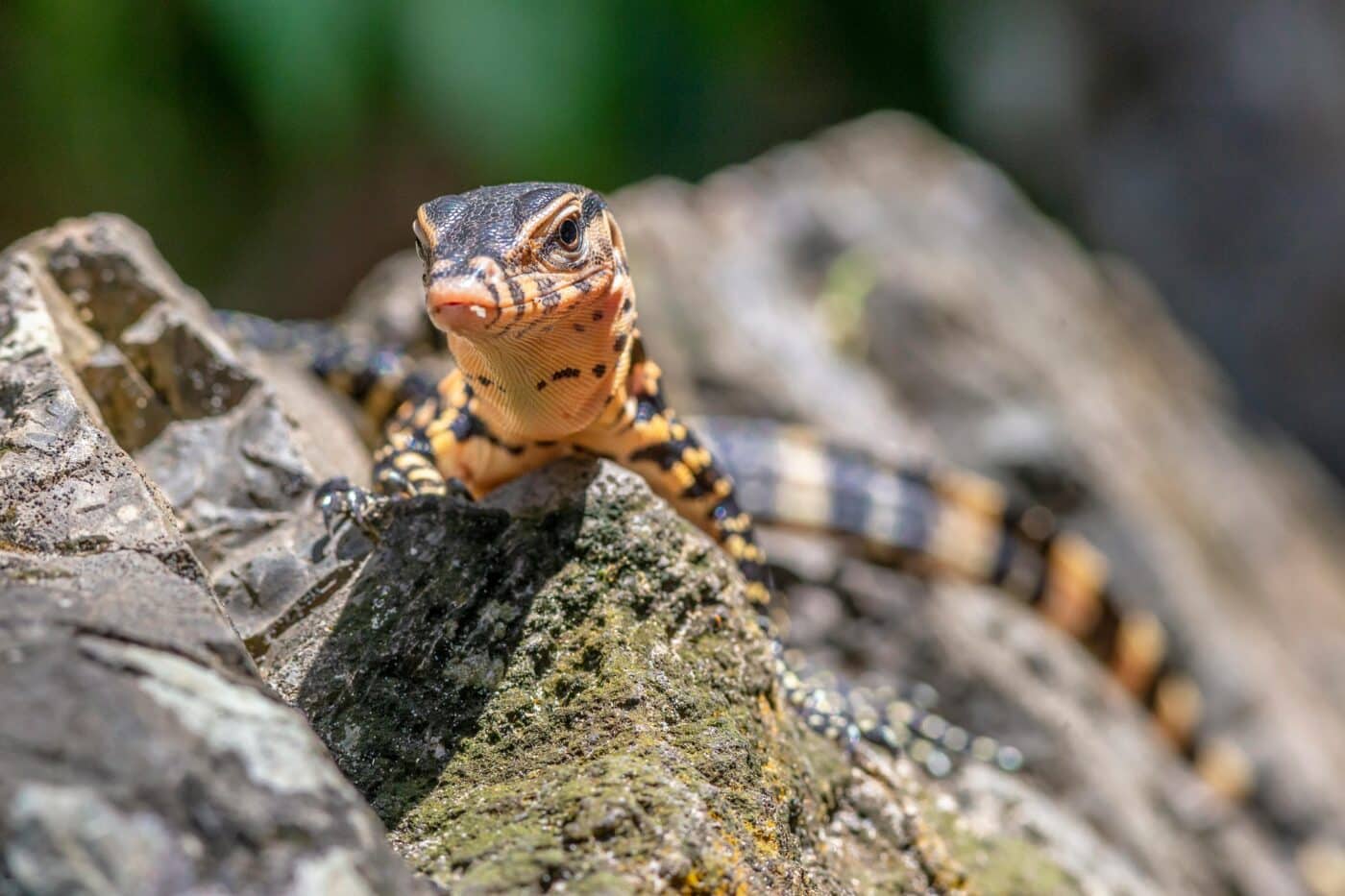 Shutterstock
Shutterstock
Poison Dart Frog
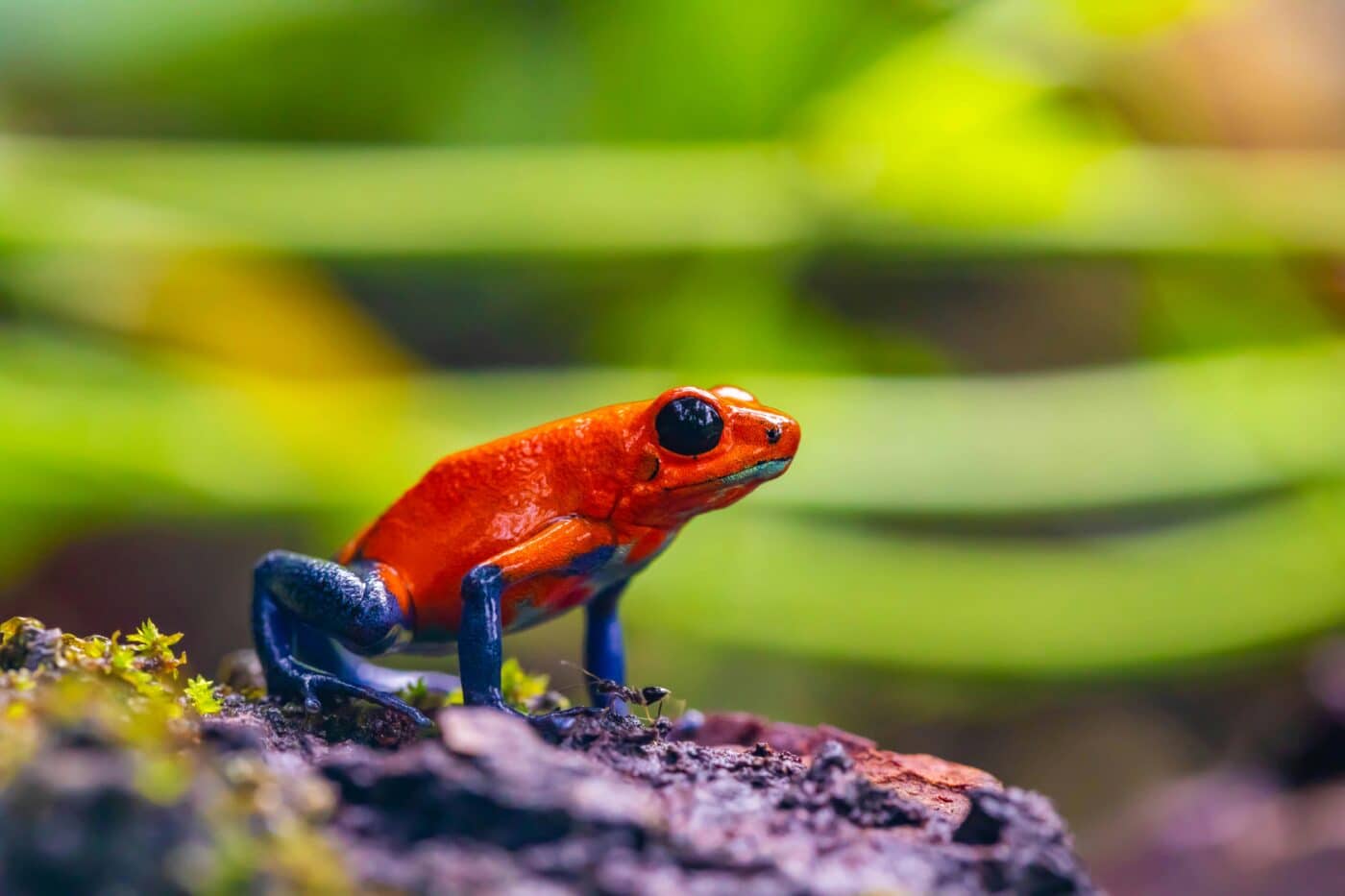 Shutterstock
Shutterstock
The poison dart frog, native to Central and South American rainforests, is a small but striking amphibian known for its vibrant colors and potent toxicity. Despite their tiny size, these frogs secrete powerful toxins through their skin, which indigenous peoples have historically used to coat the tips of blow darts for hunting. Their bright coloration serves as a warning to potential predators, signaling that they are highly poisonous. With over 100 species, poison dart frogs come in a variety of dazzling colors, making them both beautiful and dangerous inhabitants of the rainforest.
Harpy Eagle
 Shutterstock
Shutterstock
The harpy eagle, one of the largest and most powerful eagles in the world, soars through the rainforests of Central and South America. Known for its impressive wingspan, which can reach over 7 feet, and its striking crown of feathers, this majestic bird is a formidable predator, capable of hunting monkeys, sloths, and other large animals. With its sharp talons and incredible strength, the harpy eagle reigns as the apex predator of the rainforest canopy. Despite its power, it is an elusive and rare sight, and conservation efforts are crucial to protect its declining population.
Capybara
 Shutterstock
Shutterstock
The capybara, native to the rainforests and wetlands of South America, holds the title of the world’s largest rodent. Despite its massive size, this social and gentle creature is known for its friendly nature, often seen living in groups near bodies of water. Capybaras are excellent swimmers, with webbed feet that allow them to escape predators by diving underwater. Their calm demeanor and close bonds with other animals, including birds and even crocodiles, make them one of the most unique and endearing residents of the rainforest.
Pink River Dolphin
 Shutterstock
Shutterstock
The pink river dolphin, also known as the Amazon river dolphin, is a unique freshwater species found in the rivers of the Amazon Basin. Unlike its ocean-dwelling relatives, this dolphin can change color, with older males turning a striking pink as they age. Their flexible bodies and unfused neck vertebrae allow them to navigate the flooded forests of the Amazon with incredible agility. These intelligent and curious creatures are shrouded in local folklore and remain one of the most mysterious and iconic animals of the Amazon rainforest.
Kinkajou
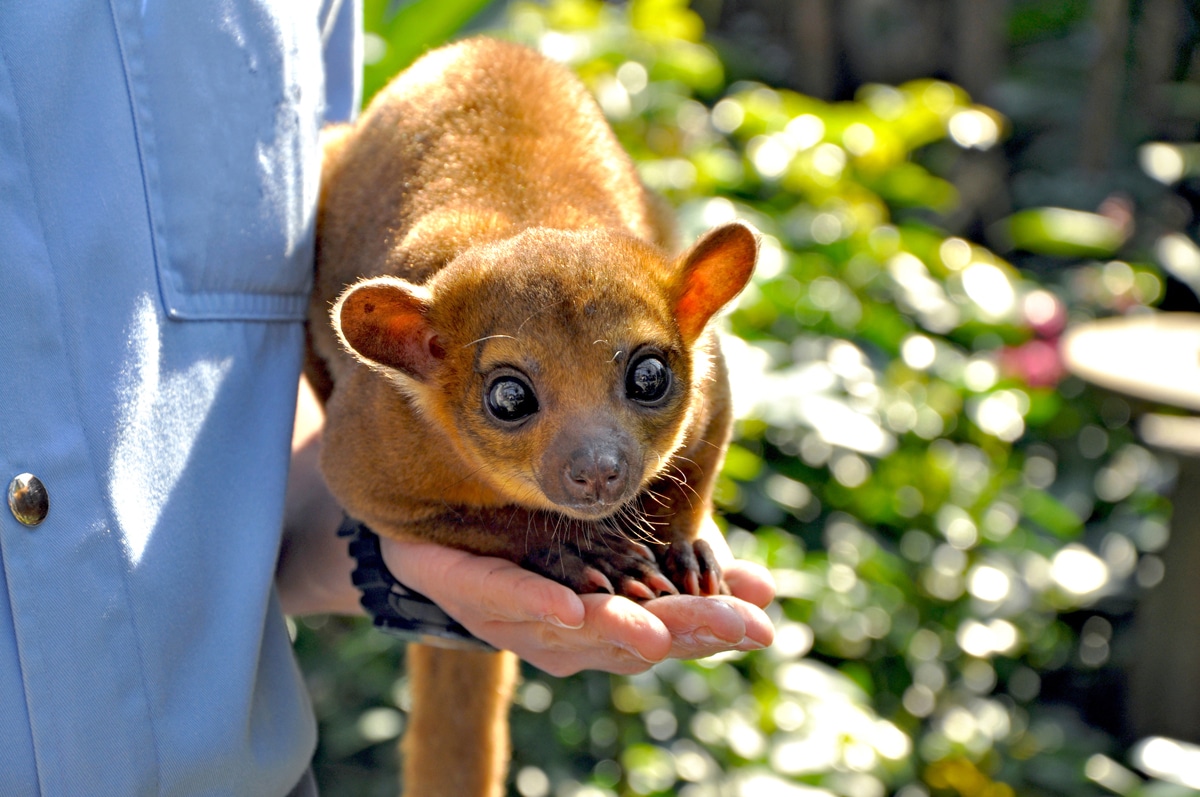 Shutterstock
Shutterstock
The kinkajou, a small, nocturnal mammal native to Central and South American rainforests, is known for its adorable appearance and love of sweet treats, particularly honey. Often called the “honey bear,” it uses its long, prehensile tail for balance and climbing through the dense canopy in search of fruit, nectar, and honey. Kinkajous are highly agile, moving effortlessly from tree to tree in the dark of night. Despite their cute and cuddly look, they are rarely seen due to their secretive, nocturnal habits, making them a hidden gem of the rainforest.
Glasswing Butterfly
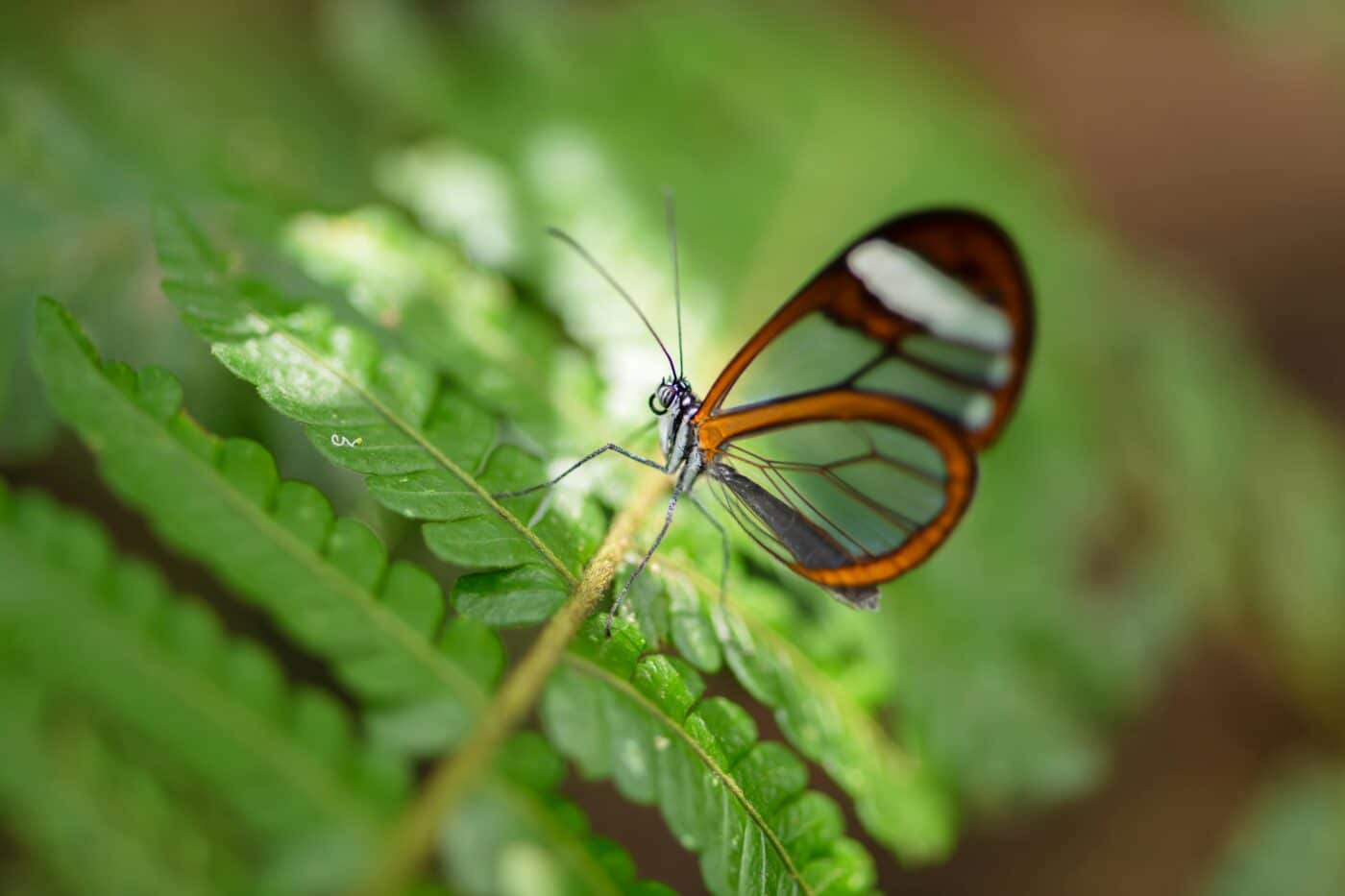 Shutterstock
Shutterstock
The glasswing butterfly, native to the rainforests of Central and South America, is renowned for its delicate, transparent wings that give it an almost ethereal appearance. These clear wings allow the butterfly to blend seamlessly into its surroundings, offering protection from predators. The borders of the wings are often lined with subtle hues of orange or brown, adding to its understated beauty. This unique transparency, combined with its graceful flight, makes the glasswing butterfly one of the rainforest’s most mesmerizing insects.
Basilisk Lizard
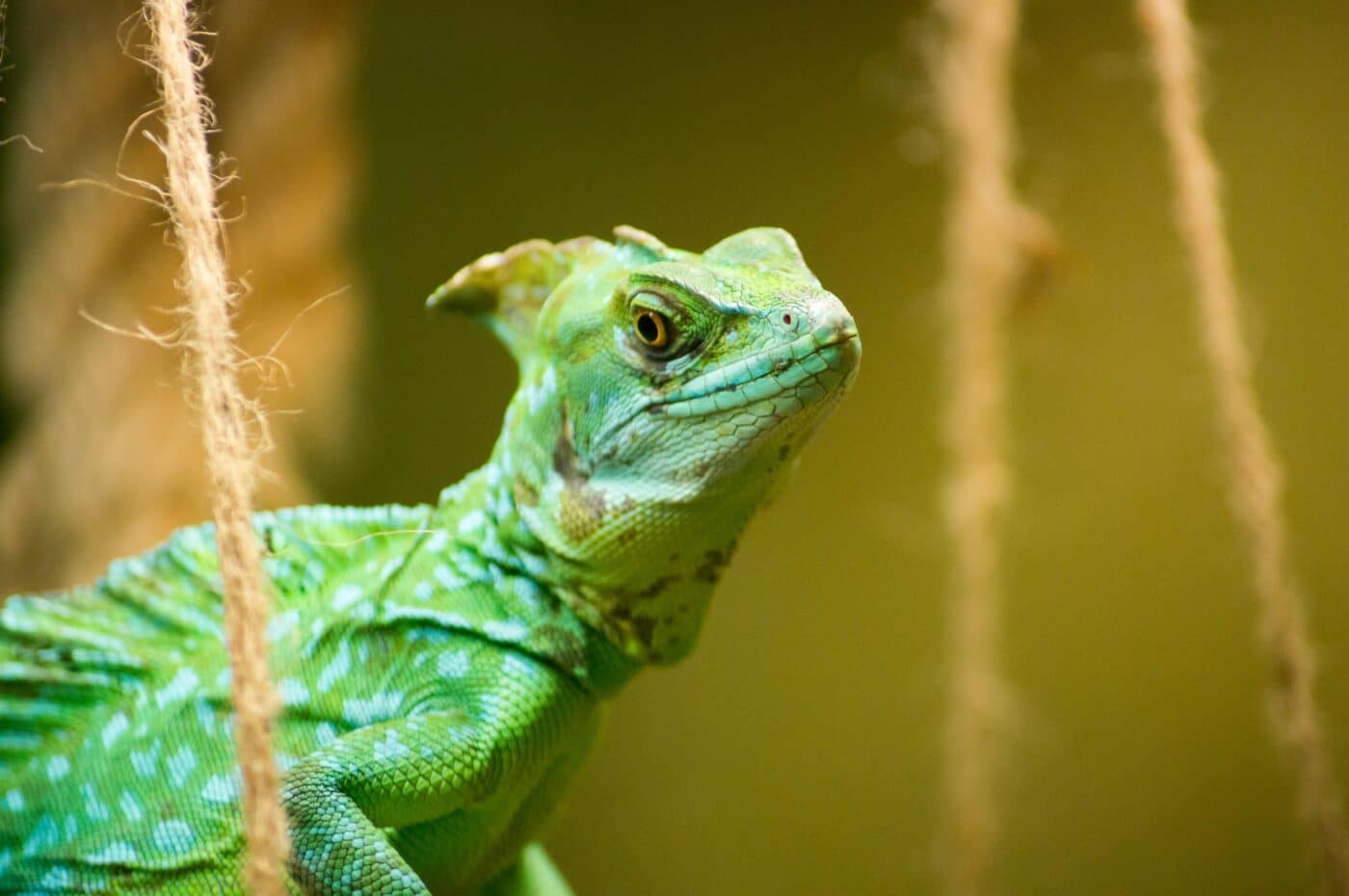 Shutterstock
Shutterstock
The basilisk lizard, commonly known as the Jesus Christ lizard, is famous for its extraordinary ability to run across water. Native to the rainforests of Central and South America, this lizard has long toes with specialized scales that create air pockets, allowing it to sprint across water surfaces at incredible speed to escape predators. In addition to this remarkable skill, the basilisk is also a proficient swimmer and climber, thriving in its dense rainforest habitat. Its water-walking ability has earned it a legendary status among rainforest creatures.
Tamandua
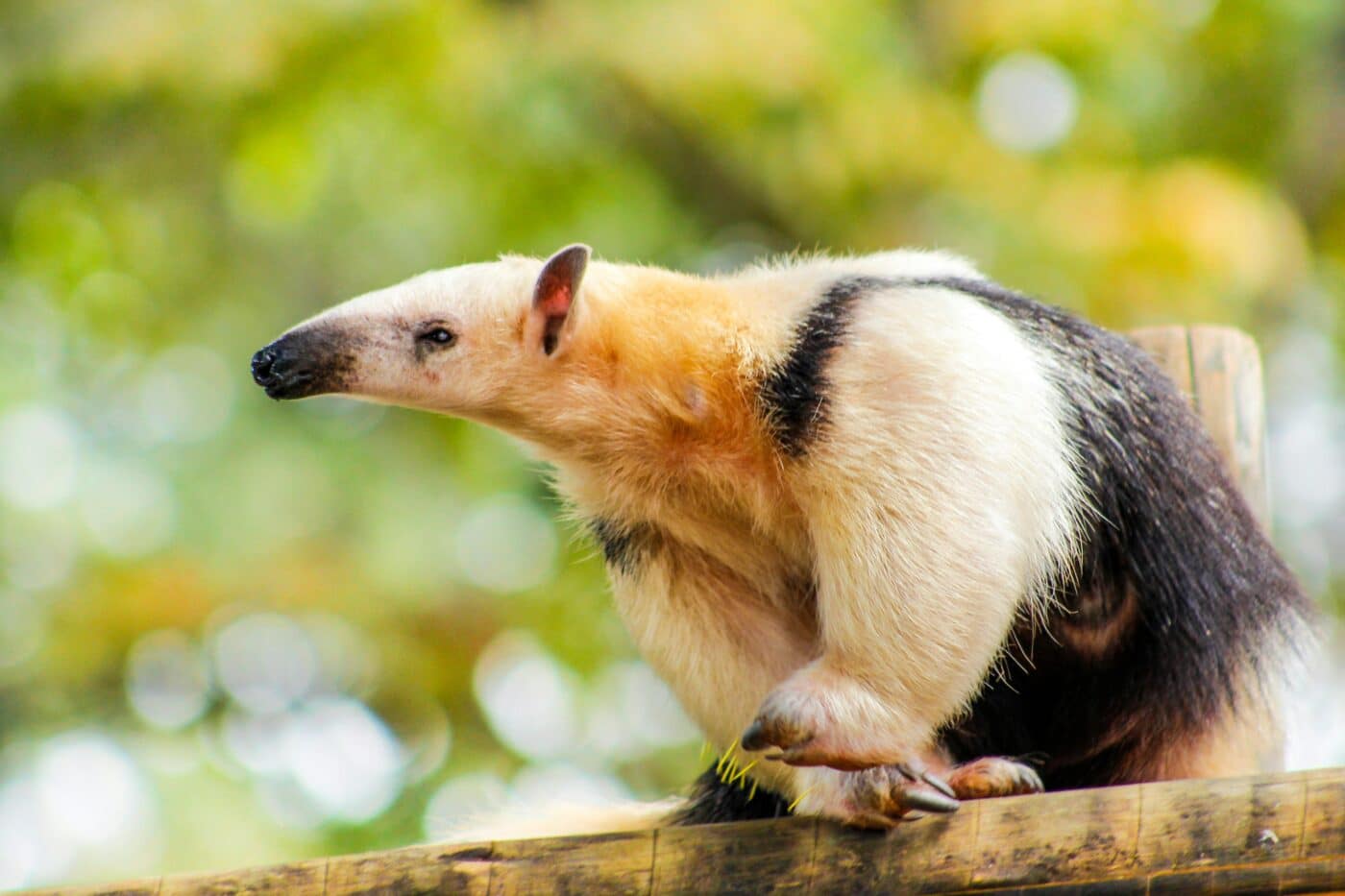 Shutterstock
Shutterstock
The tamandua is a small, tree-dwelling anteater native to the rainforests of Central and South America, particularly the Amazon. With its prehensile tail and strong claws, the tamandua is an expert climber, using these adaptations to navigate the trees in search of ants and termites. Unlike its larger anteater relatives, the tamandua spends much of its time in the treetops, tearing open insect nests with its claws and using its long, sticky tongue to feed. This nocturnal animal plays a vital role in controlling insect populations in the rainforest ecosystem.
Axolotl
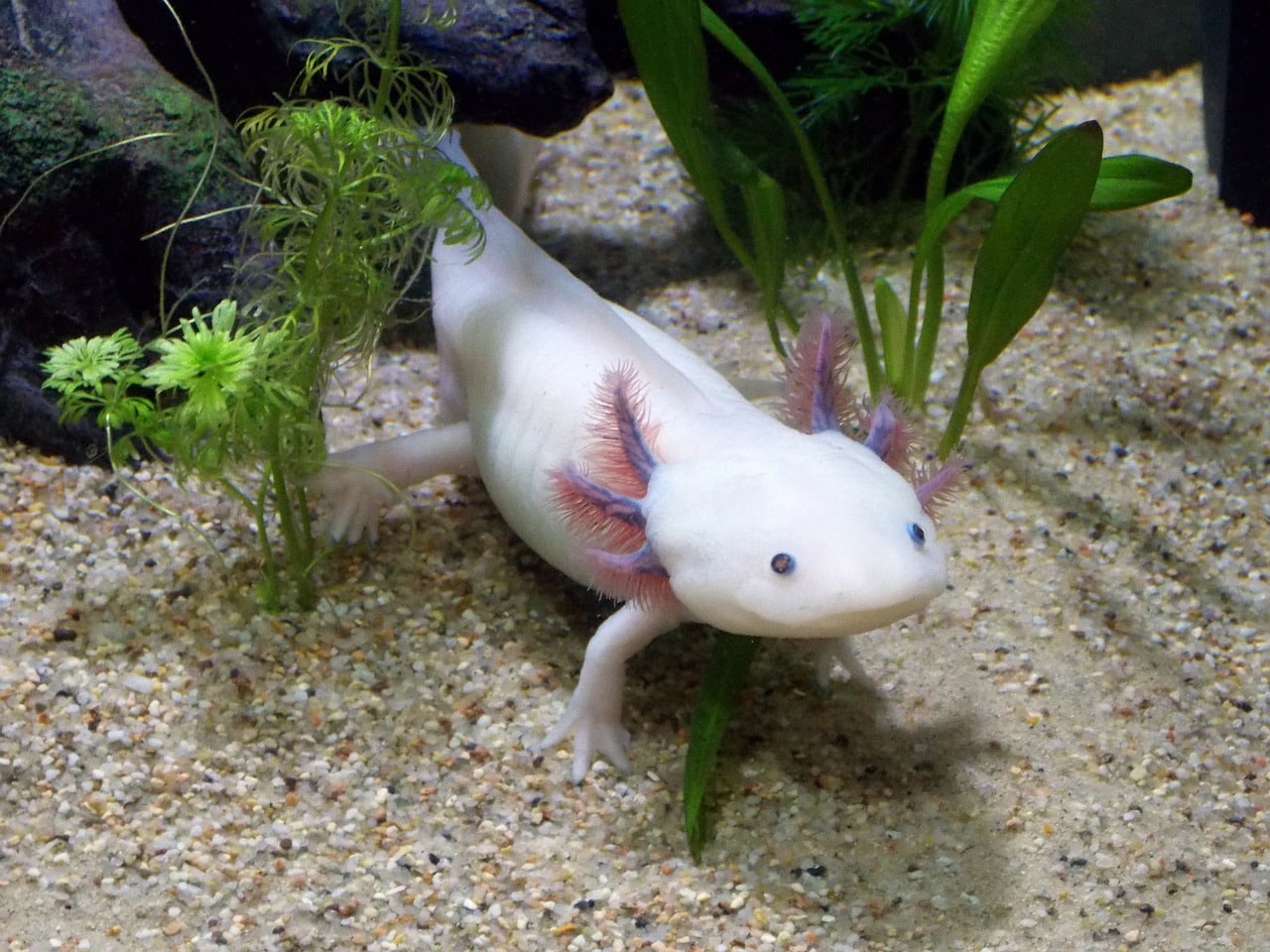 Shutterstock
Shutterstock
The axolotl, a unique salamander native to the lakes of Mexico, is famous for its ability to retain its juvenile features throughout its entire life, a condition known as neoteny. Unlike other salamanders, the axolotl remains in its larval stage, with external gills and a fully aquatic lifestyle, even as it matures into adulthood. Its remarkable regenerative abilities allow it to regrow limbs, spinal cord tissue, and even parts of its heart and brain. This “eternal youth” characteristic, combined with its charming appearance, has made the axolotl both a scientific curiosity and an iconic species.
Hoatzin
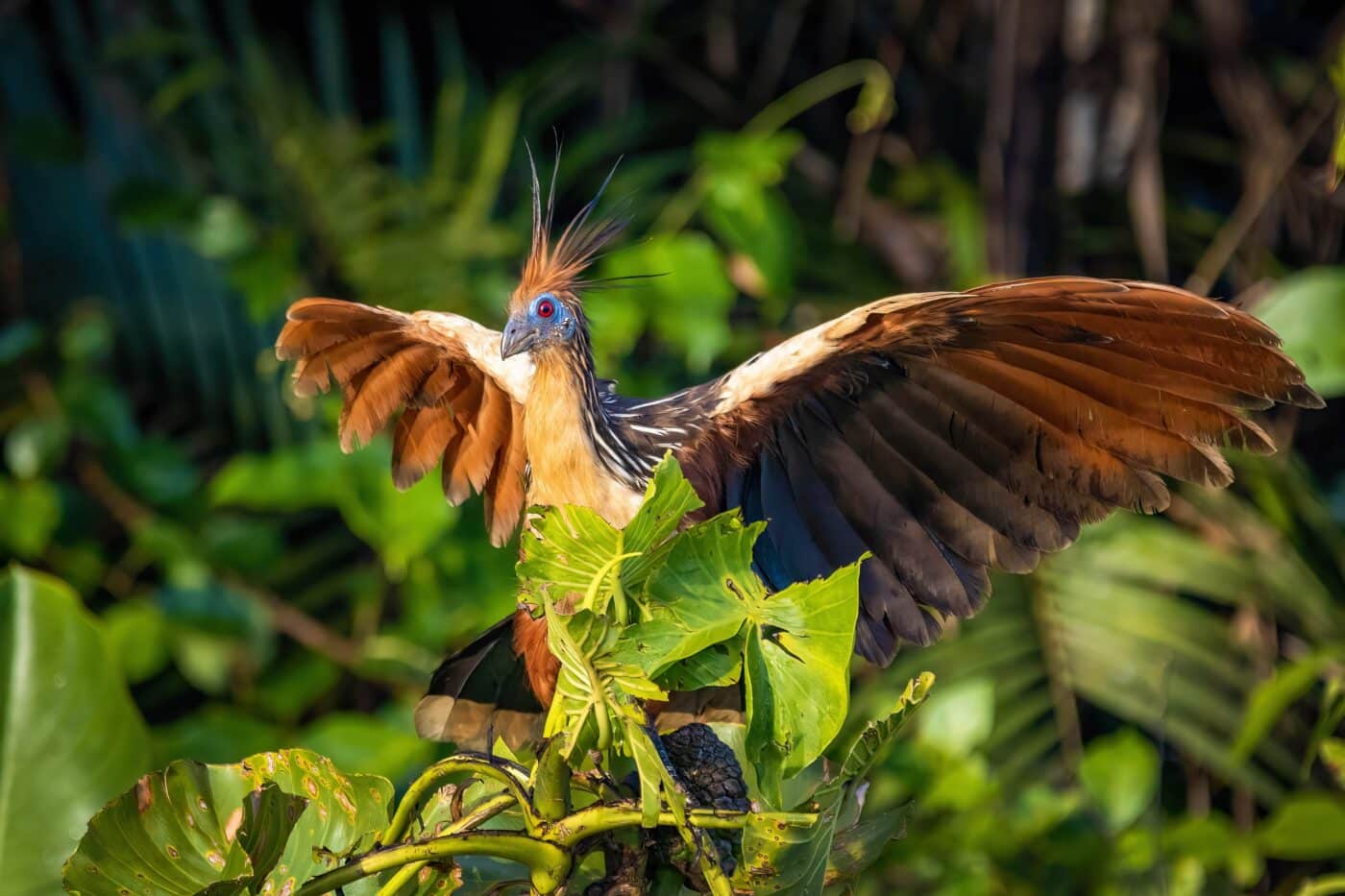 Shutterstock
Shutterstock
The hoatzin is a striking bird found in the swamps and forests of the Amazon Basin, known for its unique diet of leaves and its unusual digestive system. Unlike most birds, the hoatzin uses bacterial fermentation in its crop, similar to how cows digest, to break down the tough plant material. This process gives the bird a strong, distinctive odor, earning it the nickname “stinkbird.” In addition to its odd digestive system, young hoatzins have claws on their wings, which help them climb before they learn to fly, adding to the bird’s prehistoric appearance.
Sloth
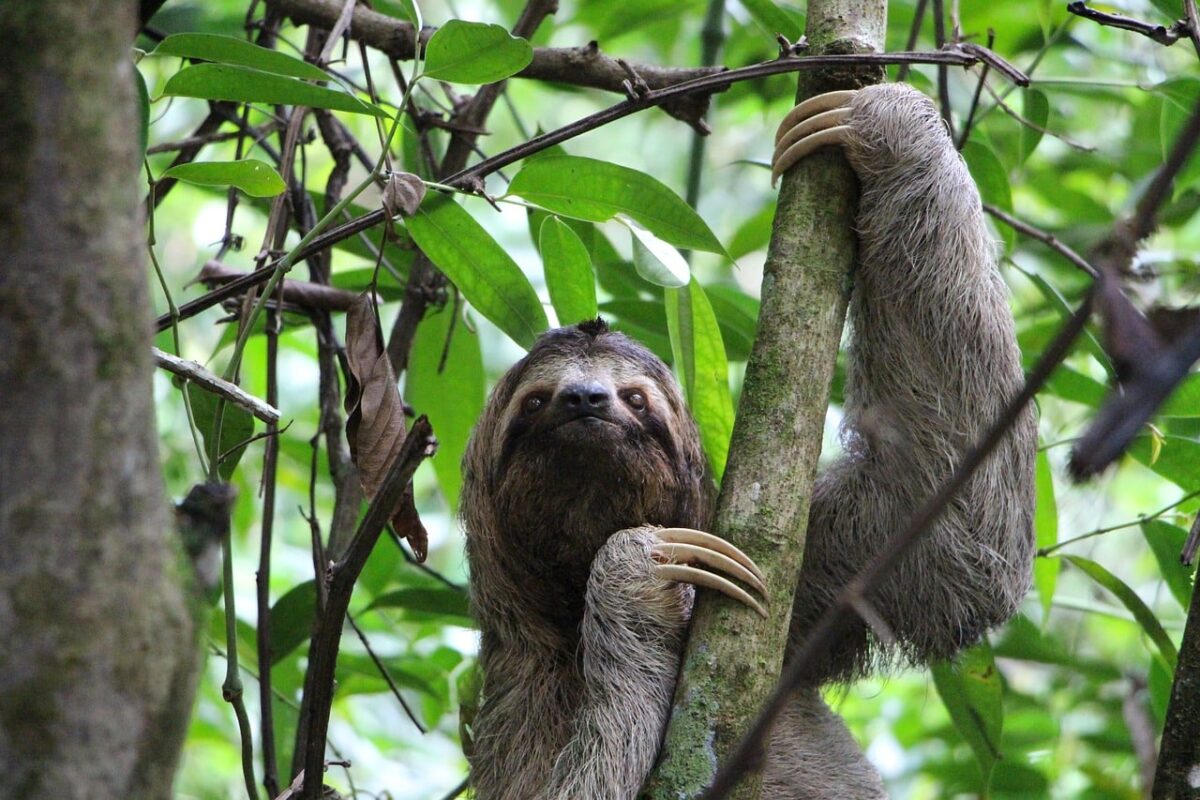 Shutterstock
Shutterstock
The sloth, native to the rainforests of Central and South America, is the slowest-moving mammal in the world, spending most of its life hanging upside down in the trees. Its sluggish pace allows algae to grow on its fur, giving it a greenish tint that provides natural camouflage in the forest canopy. This algae not only helps the sloth blend into its environment, but it also supports a small ecosystem of insects. Despite its slow movements, the sloth is an adept swimmer and has specialized adaptations that make it well-suited to its treetop lifestyle.
Pangolin
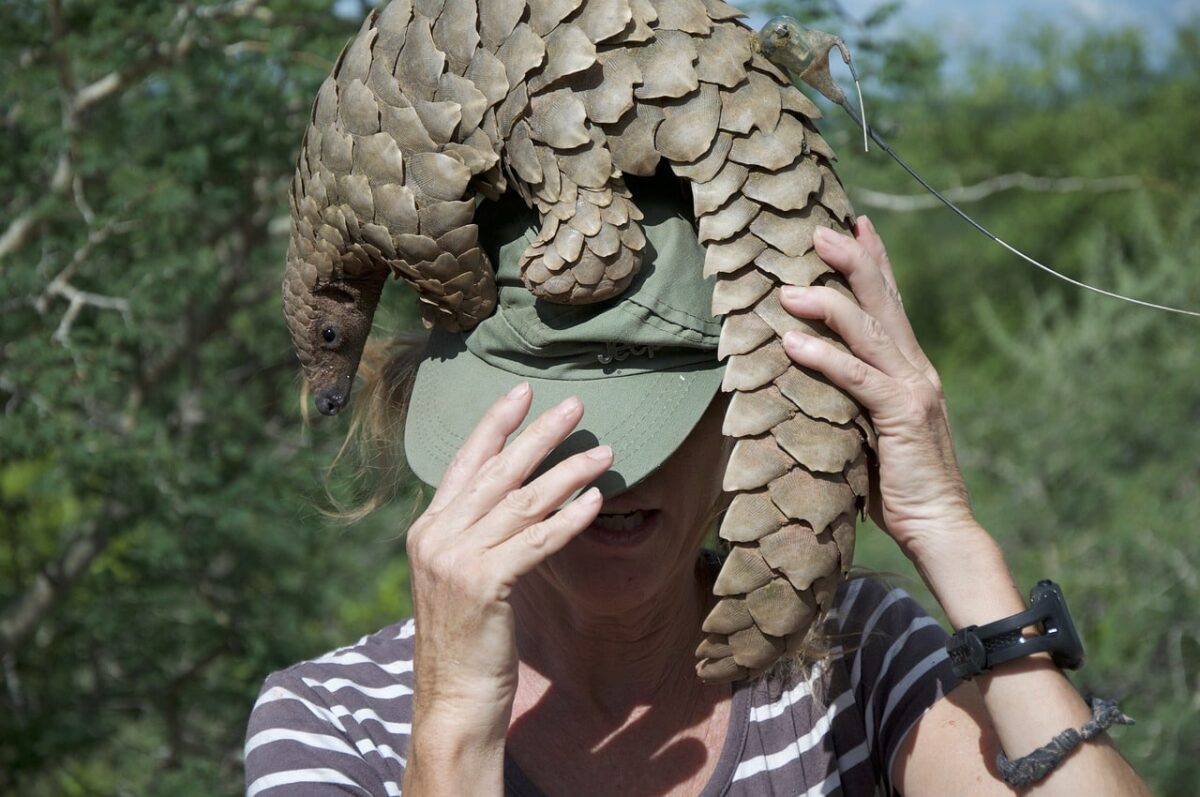 Shutterstock
Shutterstock
The pangolin, a unique insect-eating mammal found in the rainforests of Asia and Africa, is known for its protective armor of overlapping keratin scales. When threatened, the pangolin curls into a tight ball, using these tough scales as a shield against predators. This nocturnal creature primarily feeds on ants and termites, using its long, sticky tongue to extract insects from their nests. Despite its remarkable defense mechanisms, the pangolin is critically endangered due to illegal poaching for its scales and meat, making it one of the most trafficked animals in the world.
Sun Bear
 Shutterstock
Shutterstock
The sun bear, native to the tropical forests of Southeast Asia, is the smallest species of bear, standing out with its short, sleek fur and a distinctive golden crescent on its chest. This “sun” marking gives the bear its name and adds to its striking appearance. Despite its size, the sun bear is an excellent climber, using its powerful claws to forage for fruit, insects, and honey high up in the trees. Known for its playful and curious nature, the sun bear plays an important role in maintaining the balance of the rainforest ecosystem.
Shoebill Stork
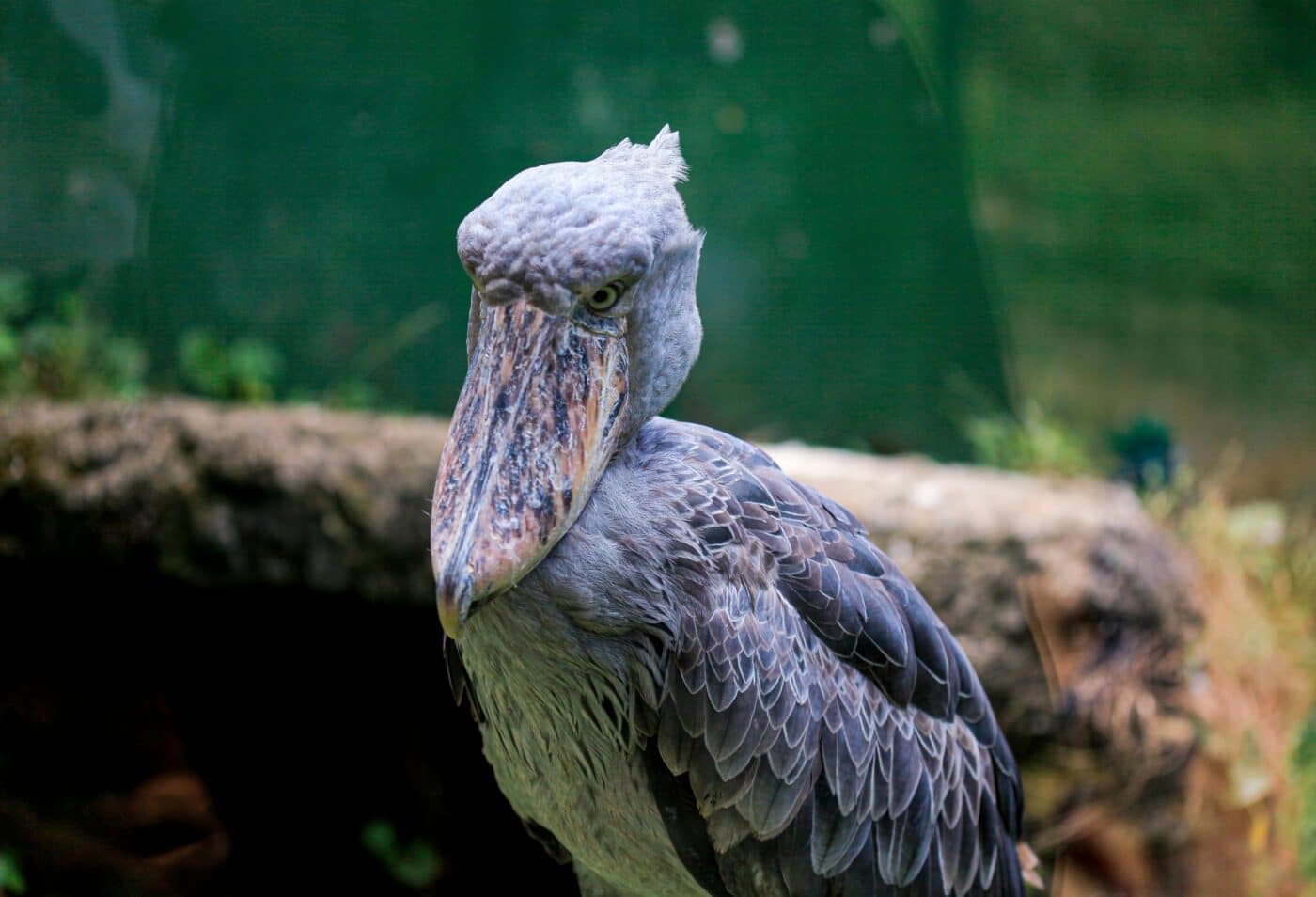 Shutterstock
Shutterstock
The shoebill stork, native to the wetlands of East and Central Africa, is a striking bird known for its enormous, shoe-shaped bill and prehistoric appearance. Standing up to five feet tall, with its wide, powerful bill, it is perfectly adapted to hunting large prey, including fish, frogs, and even small crocodiles. Its slow and deliberate movements, along with its intense, almost dinosaur-like gaze, give it an otherworldly presence. Despite its formidable appearance, the shoebill is a solitary and elusive bird, often standing motionless for long periods as it waits to ambush its prey.
Potoo
 Shutterstock
Shutterstock
The potoo, a nocturnal bird native to the rainforests of Central and South America, is a master of disguise, perfectly camouflaging itself as a tree branch or stump during the day. Its mottled brown and gray plumage, along with its motionless posture, make it almost impossible to spot in its natural habitat. At night, the potoo becomes active, using its wide, gaping mouth to catch insects in mid-flight. Its large, eerie eyes give it a ghostly appearance, adding to its mystique as one of the rainforest’s most elusive and well-camouflaged birds.
Saiga Antelope
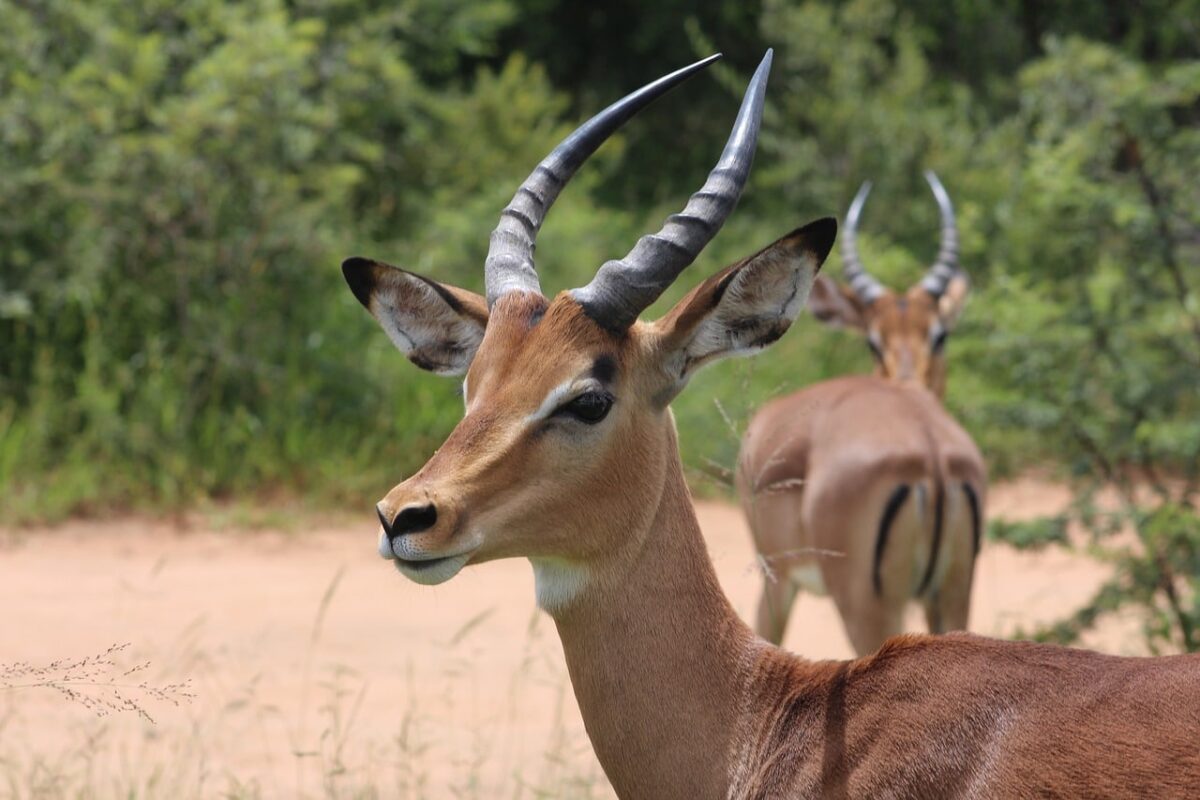 Shutterstock
Shutterstock
The saiga antelope, native to the grasslands and semi-deserts of Central Asia, is easily recognized by its large, bulbous nose, which helps filter out dust and regulate the animal’s body temperature in extreme climates. This unusual feature gives the saiga a distinctive appearance, setting it apart from other antelopes. Once abundant, the saiga is now critically endangered due to habitat loss, poaching, and disease outbreaks, with its population having dramatically declined in recent years. Conservation efforts are underway to protect this unique and ancient species from extinction.
Red-Lipped Batfish
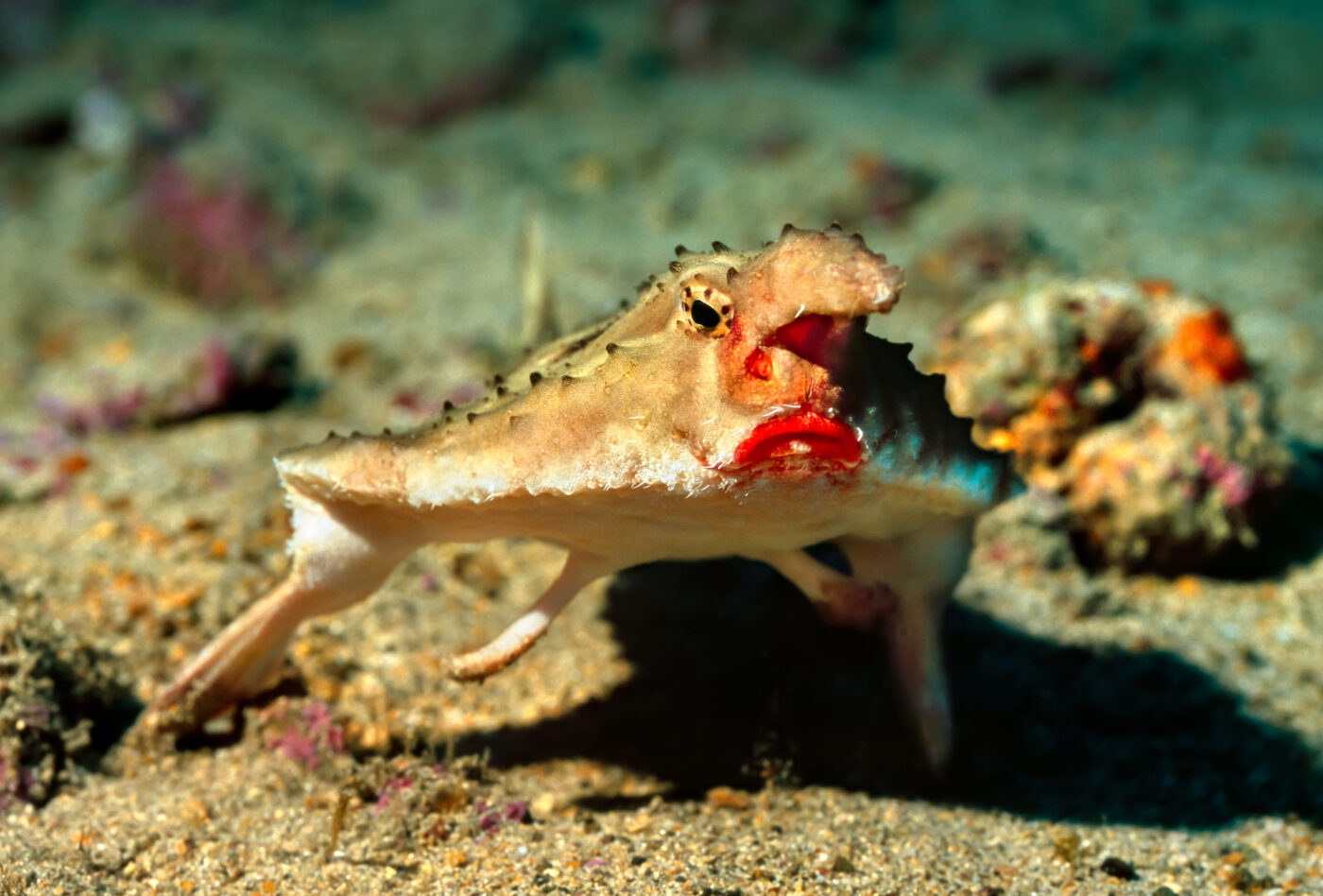 Shutterstock
Shutterstock
The red-lipped batfish, native to the waters around the Galápagos Islands, is a striking fish known for its bright red, lipstick-like lips and unusual method of “walking” along the ocean floor. With its modified pectoral fins, the batfish moves more like a creature on land than a typical swimmer, giving it a unique appearance. Although it looks like it’s dressed for a night out, the batfish uses its vivid lips to attract mates and assert dominance. Its peculiar looks and walking behavior make it one of the ocean’s most unusual and fascinating species.
Harlequin Toad
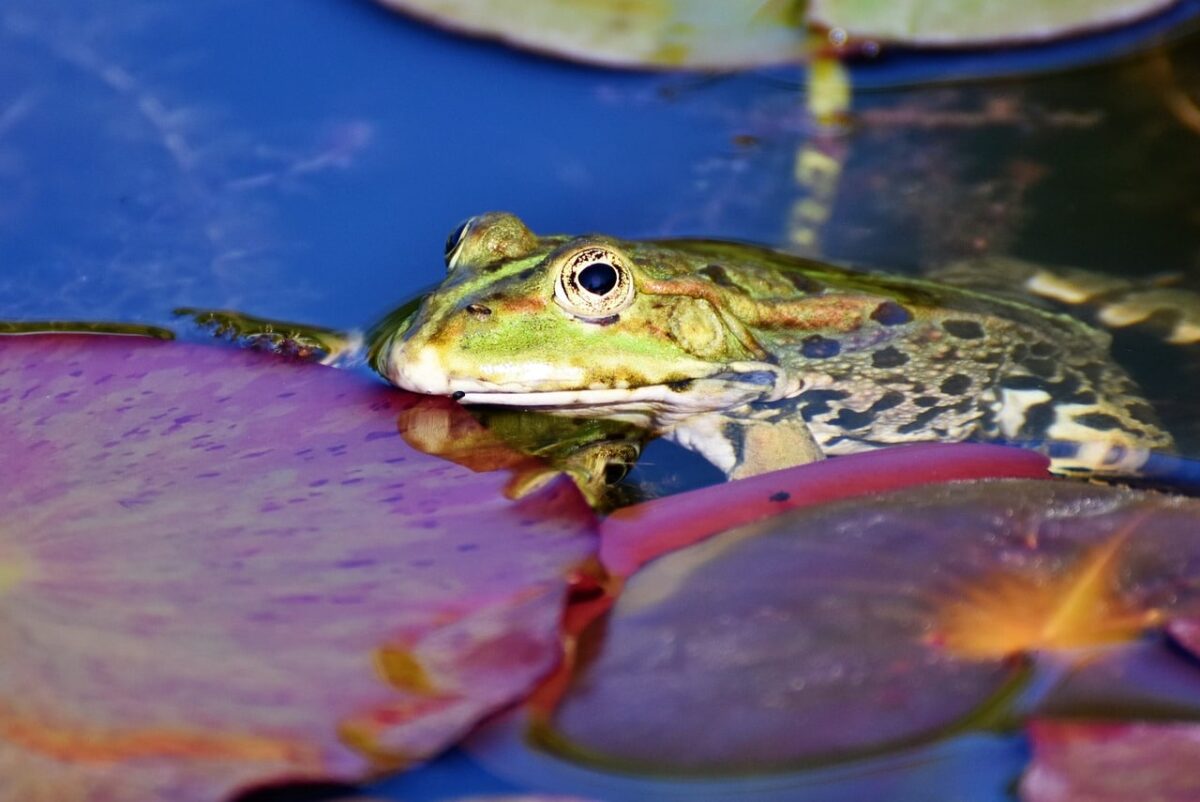 Shutterstock
Shutterstock
The harlequin toad, also known as the Atelopus, is a brightly colored amphibian found in the rainforests of Central and South America. Known for its striking patterns and vivid hues of orange, yellow, and green, it stands out as one of the rainforest’s most visually captivating species. Sadly, many species of harlequin toads are critically endangered due to habitat loss, climate change, and disease, particularly from the deadly chytrid fungus. Conservation efforts are underway to protect these “jewels of the rainforest,” but their future remains uncertain.
Slow Loris
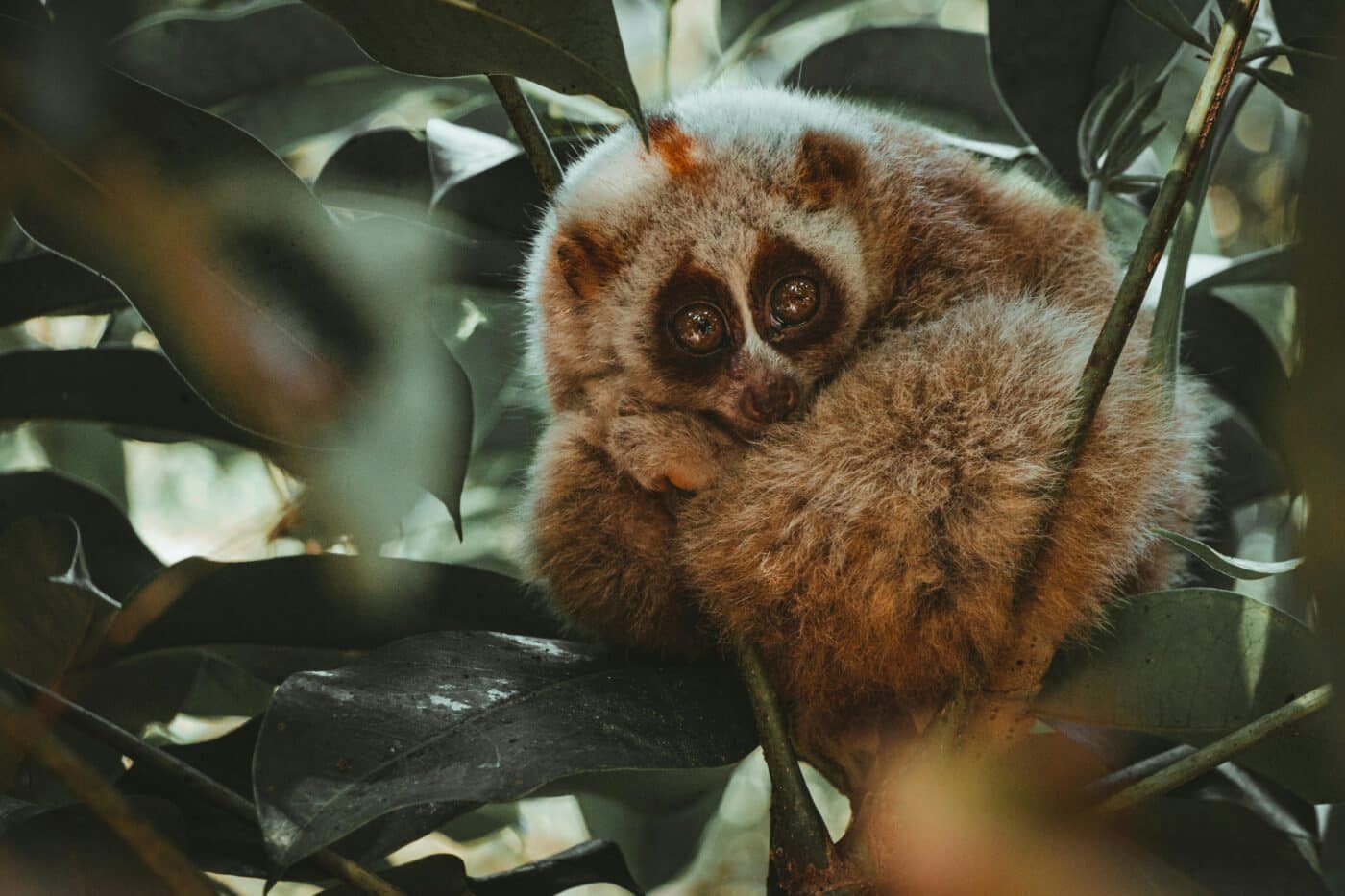 Shutterstock
Shutterstock
The slow loris is a small, nocturnal primate native to the rainforests of Southeast Asia, known for its large, round eyes and slow, deliberate movements. Despite its cute appearance, the slow loris is one of the few venomous mammals in the world, producing a toxin from glands on its arms that it applies to its bite or rubs onto its fur for protection. Its stealthy, quiet movements help it sneak up on prey or avoid detection by predators. Unfortunately, the slow loris is often threatened by the illegal pet trade and habitat destruction, pushing this fascinating creature toward endangerment.
Spider Monkey
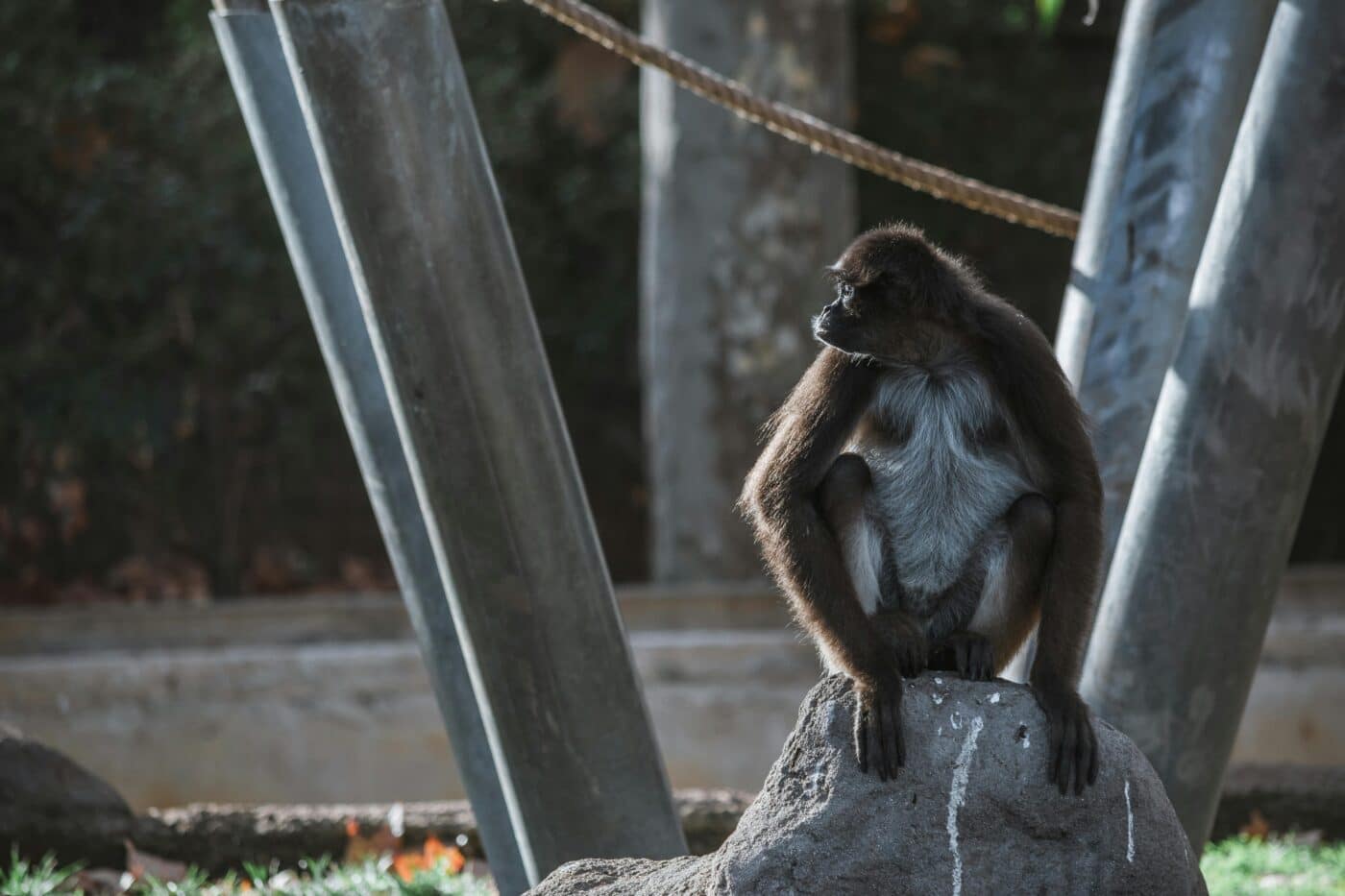 Shutterstock
Shutterstock
The spider monkey, native to the tropical rainforests of Central and South America, is known for its incredible agility and long limbs, which make it an expert acrobat of the canopy. Its prehensile tail acts as a fifth limb, allowing it to swing gracefully from branch to branch while searching for fruit, its primary food source. Spider monkeys are highly social animals, often living in large groups and using their complex vocalizations to communicate. Their agility and intelligence make them fascinating creatures, but habitat loss and hunting have made them vulnerable in the wild.
Horned Frog
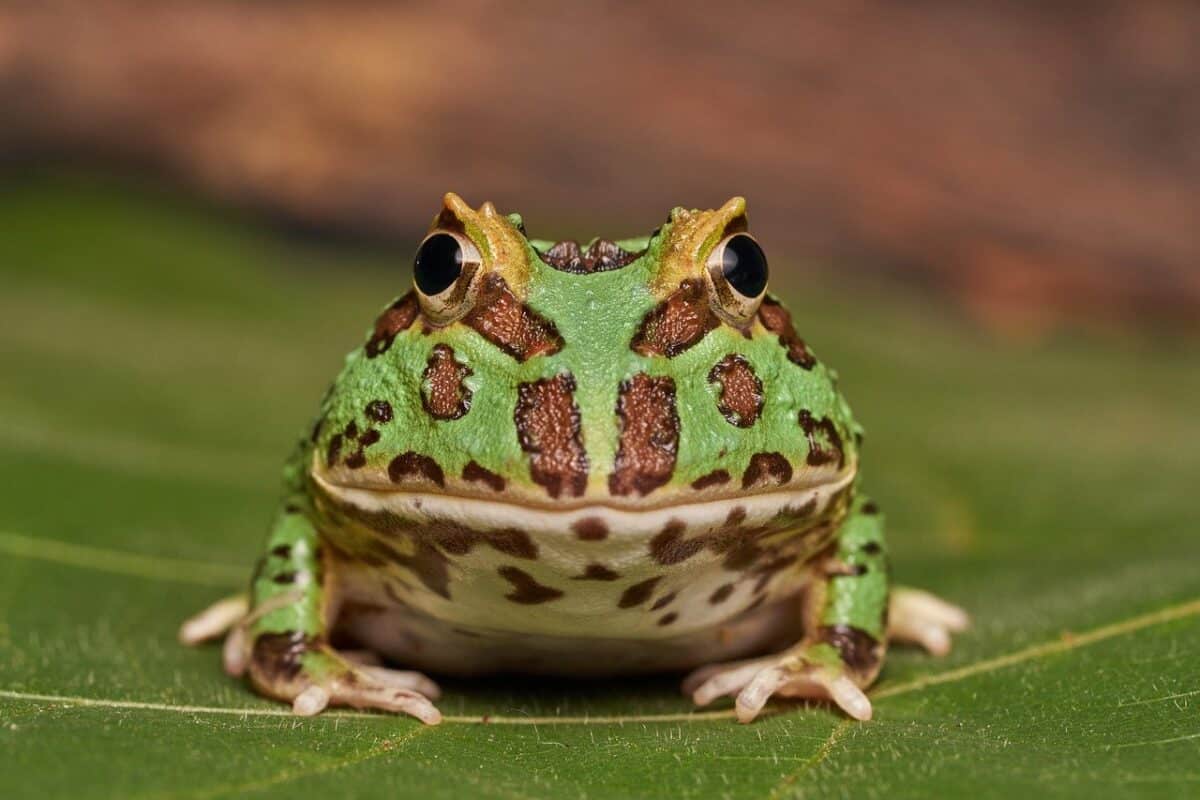 Shutterstock
Shutterstock
The horned frog, also known as the Pacman frog, is a stout, aggressive amphibian found in the rainforests of South America. It gets its name from the horn-like projections above its eyes, which give it a fierce, almost dragon-like appearance. A skilled ambush predator, the horned frog lies in wait, buried in leaf litter, until unsuspecting prey like insects, small rodents, or even other frogs wander too close. Despite its relatively small size, its wide mouth and voracious appetite make it a formidable predator in its rainforest habitat.
Ocelot
 Shutterstock
Shutterstock
The ocelot is a sleek, medium-sized wildcat found in the dense rainforests of the Amazon and other parts of Central and South America. Its beautifully patterned coat, with distinctive spots and stripes, provides excellent camouflage as it hunts for small mammals, birds, and reptiles in the jungle undergrowth. Ocelots are solitary and nocturnal, relying on their keen senses and stealth to silently stalk and ambush their prey. Though they were once hunted extensively for their striking fur, conservation efforts have helped protect this elegant predator, though habitat loss remains a concern.
Malayan Colugo
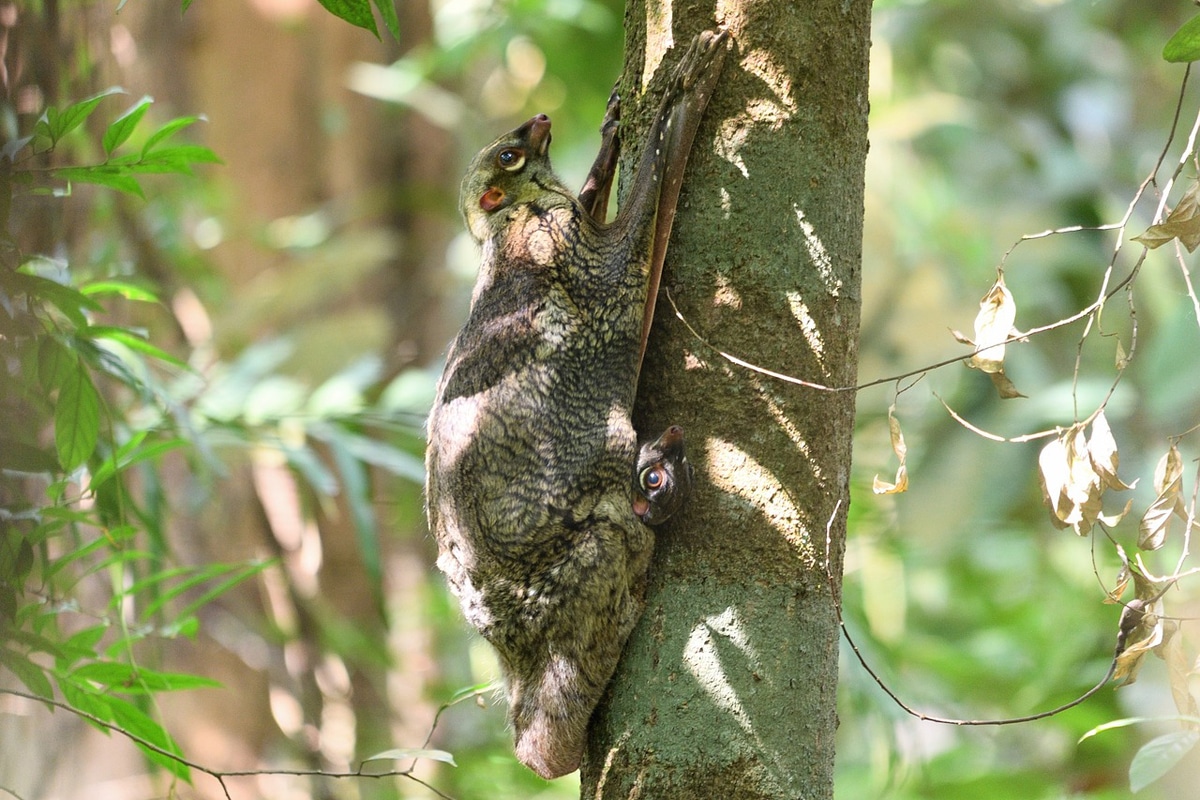 Shutterstock
Shutterstock
The Malayan colugo, also known as the flying lemur (though it is not a true lemur), is a remarkable gliding mammal found in the rainforests of Southeast Asia. With its large, webbed membrane stretching from its neck to the tips of its limbs and tail, the colugo can glide distances of over 100 meters between trees. Nocturnal and highly adapted to life in the treetops, it feeds on leaves, flowers, and fruit while rarely descending to the ground. Its graceful gliding ability makes the Malayan colugo one of the most extraordinary aerial navigators of the rainforest.
Electric Eel
 Shutterstock
Shutterstock
The electric eel, native to the waters of the Amazon Basin, is a powerful predator known for its ability to generate electric shocks. Despite its name, the electric eel is actually a type of knifefish and can produce electric discharges of up to 600 volts, which it uses both for hunting prey and defending itself from predators. This shocking ability is generated by specialized cells called electrocytes, making it one of the most unique and dangerous hunters in the Amazon’s waterways. In addition to its electric capabilities, the electric eel must surface regularly to breathe air, as it relies on oxygen from the atmosphere for survival.
Wrapping Up the Wild Wonders of the Rainforest
 Shutterstock
Shutterstock
From transparent frogs to water-walking lizards and venomous primates, the rainforests of the world are home to some of the most extraordinary and unusual creatures on the planet. Each animal has evolved unique adaptations that not only help them survive but also captivate our imaginations. These fascinating species remind us of the incredible diversity that thrives in these lush ecosystems and the importance of protecting their habitats. As we continue to explore and learn about these remarkable animals, we are reminded of the endless wonders that the rainforest holds.

 1 month ago
12
1 month ago
12






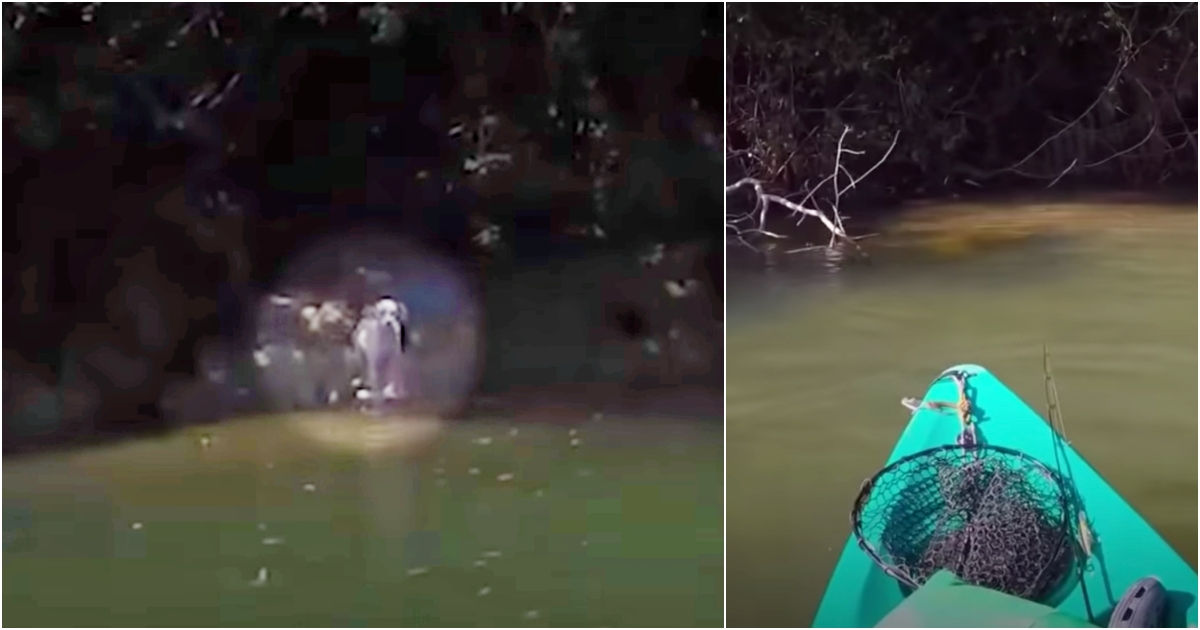




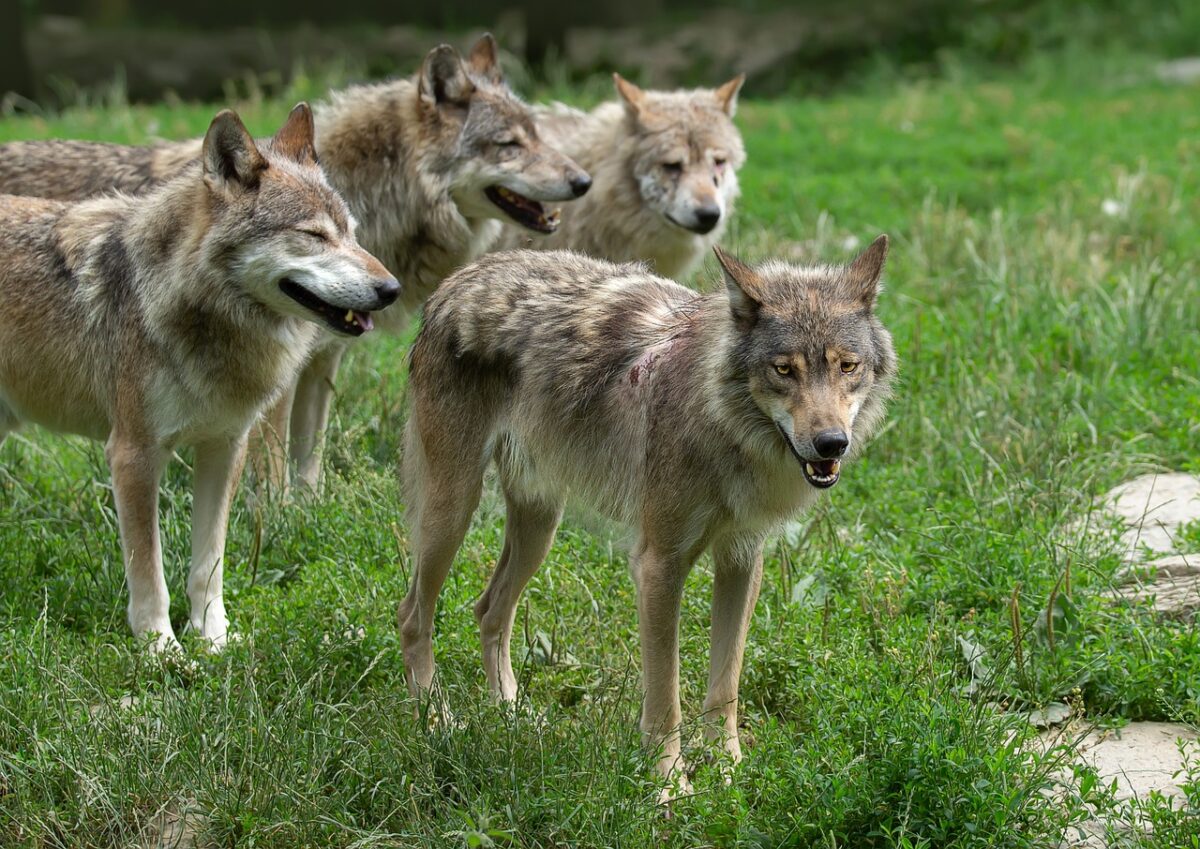






 English (US) ·
English (US) ·